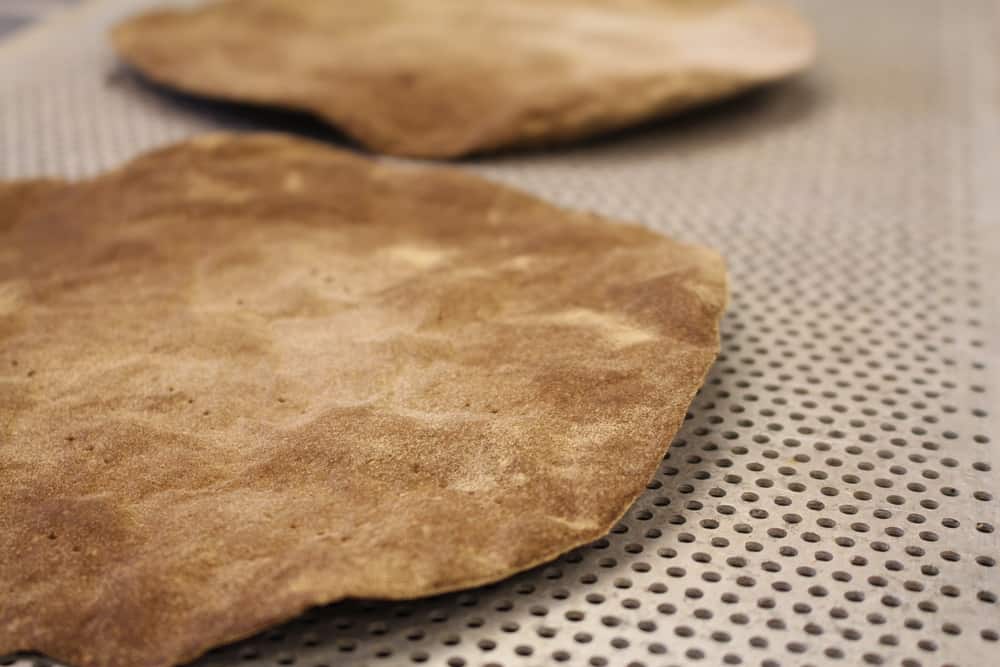by June Pelo

Photo used with permission from Nordic Food Lab licensed under CC SA-BY 4.0
During times of famine in Finland, our ancestors looked for substitutes to replace the grain which was not available to harvest. During the years 1596–98 our forefathers were plagued by what is the longest famine in historical times. The people ate leaves, husks, hay, straw and moss as well as bark from trees. Bark bread was eaten more frequently in Finland than in any other Nordic country. The population was made largely of farmers. Villages were more isolated in Finland and it was impossible to shift grain from one province to another—roads were almost non-existent and there were no effective means of transport. Research shows that bark bread formed part of our ancestors’ diet and it was their daily bread for long periods of time. Even during the 20th century wars, when food was rationed, people mingled bark in their bread.
Today the bark bread tradition is carried on at Kilen Museum in Sideby where it is baked for the tourist trade. Bark meal includes important nutritional substances and is mixed in small quantities with rye and wheat flour when baked into bread. Bark meal contains more zinc, magnesium and iron then is found in rye and wheat and it is full of fiber.
The light inner bark of the pine tree is harvested in the spring when the bark is more easily removed from the tree trunk. The vitamin content is also highest in the spring. A flap of the outer bark as well as the green layer is cut away with a knife and folded back, exposing the light beige inner bark which is about 2 millimeters thick. The flap is replaced, the tree trunk hardens and protects the tree. The bark membrane is very thin and many trees have to give up their skins before there is enough for barkmeal.
After the inner bark is removed, it is kept outside in the open air until it hardens like cardboard. Then it is roasted in an oven until light brown. At Kilen Museum a special mill was constructed to grind the bark because it has too much fiber to be ground with a mortar or other mixer. The barkmeal contains no gluten and is low in cholesterol. At Kilen they use 1 deciliter of barkmeal to 10 deciliters of flour.
Editor’s note: Visit the Nordic Food Lab for a more thorough exploration of the use of tree barks in Nordic foods. They even have a tempting recipe for pine bark oreos and so much more!
Bark Bread Recipe
2 liters (2 quarts + 1/2 cup) lukewarm water
4 deciliters (1 3/4 cups) barkmeal
3-4 packages yeast
2 liters (8 1/2 cups) rye flour
2 liters (8 1/2 cups) wheat flour
The ingredients are mixed the same as any other bread. The dough is set aside to rise for an hour; then it is punched down and allowed to rise for 40 minutes. The dough is shaped into 24 balls, placed on cookie sheets and flattened like pancakes. According to a picture I saw, the top of each bread was poked with the tines of a fork, and a little barkmeal was sprinkled on top before baking. The bread is baked at 450 F. for 10-15 minutes. The recipe makes 24 small breads.